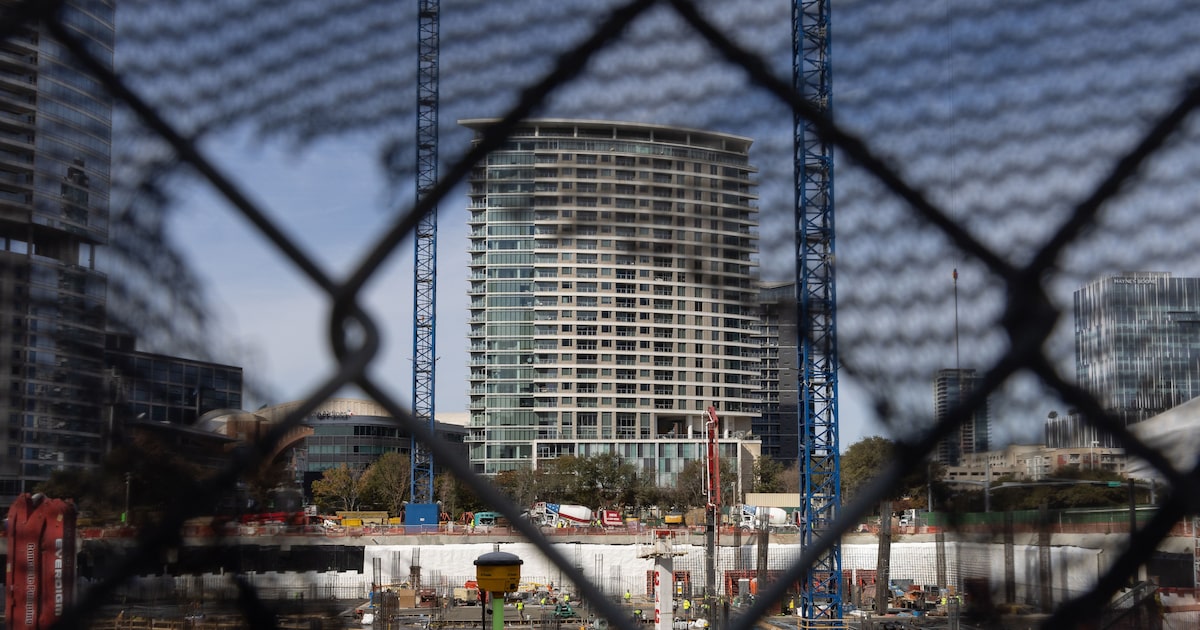Vacancies in Dallas’s office market have seen their first drop in five years — and it isn’t because prices are coming down.
In fact, it’s the opposite. Companies jockeying for top-shelf product in the local office market have brought vacancy rates down by half a percentage point since last year — the first yearly decline since 2019 — and down nearly a full percentage point since the record highs they charted at the end of 2024.
“A clear two-tiered office market is being drawn across the country, with most tenants favoring Class A and trophy assets in neighborhoods that are walkable, and near residential communities,” said Ariel Guerrero, manager for market intelligence with Avison Young, a global commercial real estate brokerage and advisory firm headquartered in Toronto, Canada which published a report tracking Dallas’ office market.
The markets accruing the most momentum are the ones with the most walkable neighborhoods, with restaurants and retail. Those amenities attract businesses who, in turn, wish to attract and retain top-tier talent, and bring them back into the office, Guerrero said.
D-FW Real Estate News
While vacancy across the office market metrowide still sits at 25.3%, just below the metro’s highest on record in recent years, the decline is an encouraging sign for landlords of Dallas’ highest-valued properties.
Far and away, Uptown is the center of the conversation when it comes to Dallas’ office market.
Nearly three-quarters of the metro’s current 2.7-million-square-foot construction pipeline is in Uptown.
“Walkability and the younger generation are big factors. You’re seeing a lot of the companies in Uptown with a younger workforce, so that walk factor has been a major influence for three to four years now,” said Greg Langston, principal and managing director of Avison Young’s Dallas office.
The area continues to siphon businesses away from markets like downtown, quickly becoming the nucleus of Dallas’ financial industry.
“Trammel Crow Center is doing really well, but Goldman Sachs has a lot of space occupied there. Once Goldman and their 300,000 square feet move into their new headquarters in Dallas, what will happen there?” Langston asked.
Related:Downtown Dallas’ Trammell Crow Center skyscraper sells at a towering price
The demand for top-tier office space in the Dallas market is so pronounced that a lull in construction fomented by high material and labor costs, as well as the high cost of debt, has caused the supply pipeline to become constricted.
“There are 11 buildings under construction citywide, and 69% of those spaces have been pre-leased. Many of those are purpose-built, but there is some spec product,” Guerrero said. “If you look at the higher-quality buildings, a lot of them are well leased up. We’ve seen construction start to go away and pretty much pause — what we foresee is a potential supply crunch.”
The construction slowdown is also pushing rental rates up across the board. Most of the rate growth in the metro’s office market is being driven by Uptown, which commands the highest rents by a wide margin — a gap that continues to widen.
“The tide is rising for everybody — especially in Uptown,” Langston said.
Preston Center, another hot office market in the metro, is facing the most compressed vacancies in the area at just under 9%, with the prospect of immediate reprieve unlikely given the slowdown in new construction.
“There’s a lot of tightness in that market, with not much space for any new tenants,” Guerrero said. “It’s going to have to trickle down to other nearby markets.”
Although its office footprint is one-third of Uptown’s, Preston Center is ideal for workers commuting from northern Dallas suburbs, and also offers similar amenities to Uptown, Langston said.
